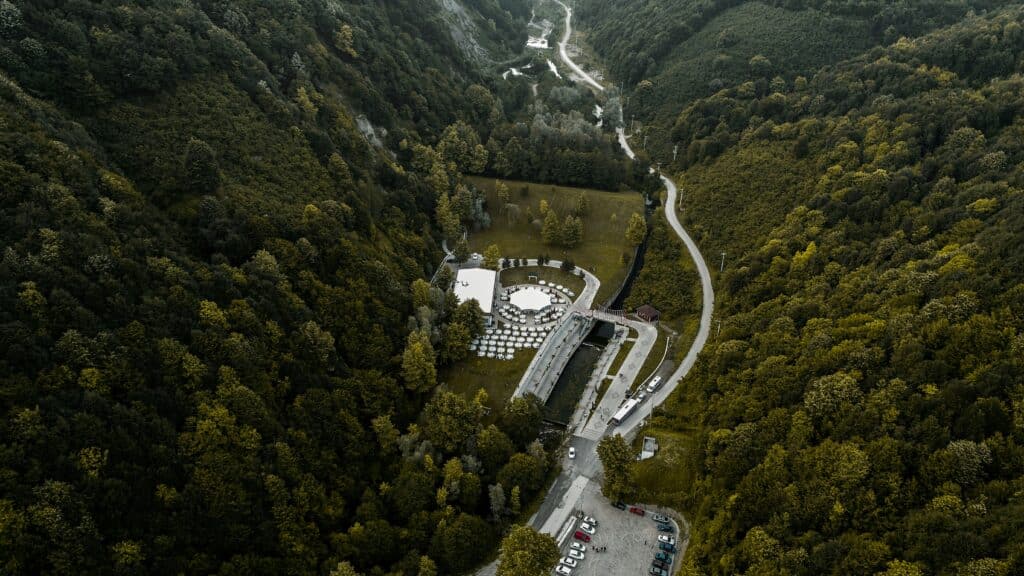Tree Relocation Overview
Relocating mature trees can be a complex process, but understanding its significance and the associated costs is essential for Chattanooga homeowners.
Importance of Tree Translocation
Tree translocation involves moving mature trees from one location to another. This practice is crucial for several reasons:
- Urban Development: As cities expand, mature trees may need to be relocated to make way for new structures while preserving green space.
- Environmental Conservation: Tree translocation helps in conserving species and maintaining urban greenery, which is vital for ecological balance.
- Personal Landscaping: Homeowners may wish to redesign their landscapes without losing mature trees that add character and value to their property.
According to Mongabay India, policies in various regions emphasize the importance of tree translocation, especially in urban development projects, to minimize deforestation and environmental impact. For professional assistance, consider hiring tree relocation companies.
Factors Affecting Tree Moving Costs
The cost of relocating mature trees can vary based on several factors:
- Tree Size and Species: Larger and more delicate species can significantly increase the costs. Different tree species may require specific care and handling during relocation.
- Root Ball Size: The size of the root ball is essential for ensuring tree survival. Root pruning, recommended several months to a year in advance (Penn State Extension), can help develop a manageable root ball.
- Site Accessibility: Difficult or restricted site access can complicate the relocation process and require specialized tree transplanting equipment.
- Distance of Relocation: The further the tree needs to be moved, the higher the transportation and logistical costs.
- Professional Services: Hiring certified arborists for the job ensures expertise and increases the chances of successful translocation (Davey).
| Factor | Cost Impact |
|---|---|
| Tree Size and Species | High |
| Root Ball Maintenance | High |
| Site Accessibility | Moderate to High |
| Distance of Relocation | Moderate |
| Professional Services | Variable, depends on the complexity of the job |
Understanding these factors can help homeowners in Chattanooga make informed decisions about relocating their mature trees. For urgent needs, consider exploring emergency tree relocation services.
For continuous insights and expert advice, keep an eye on our posts related to moving large trees safely.
Tree Transplantation Preparation
Proper preparation is crucial when relocating mature trees to ensure their health and survival. This involves root pruning methods and maintaining the root ball.
Root Pruning Methods
Root pruning is a critical step recommended several months to a year in advance of moving mature trees. This process allows the tree to develop new feeder roots within the future root ball zone, reducing transplant shock.
Two common methods of root pruning for relocating mature trees are spading and trenching:
- Spading: Involves using a sharp spade to cut through existing roots in a circular cut inside the edge of the future root ball.
- Trenching: Entails digging a trench around the plant and filling it with soil high in organic matter. This method is suitable for trees that have been in their original location for several years.
Here’s a table illustrating recommended minimum root ball sizes based on tree diameter:
| Tree Diameter (inches) | Minimum Root Ball Diameter (inches) |
|---|---|
| 1 | 18 |
| 2 | 24 |
| 3 | 30 |
| 4 | 36 |
| 5 | 42 |
Root Ball Maintenance
Post-root pruning, maintaining the root ball is essential for the successful transplantation of mature trees.
- Moisture: Ensure the root ball receives adequate moisture, particularly during dry seasons. A layer of mulch over the root ball, avoiding contact with the trunk, can help retain moisture and protect roots during winter (Penn State Extension).
- New Location Preparation: Prior to moving the tree, the new location should be prepared by digging a hole and soaking the root ball to keep the soil intact.
- Wrapping: The root ball should be wrapped in untreated natural burlap and securely tied to hold the roots in place during relocation (Penn State Extension).
For more guidance, consider consulting tree relocation companies that specialize in emergency tree relocation and have the right tree transplanting equipment.
By following these root pruning methods and root ball maintenance practices, Chattanooga homeowners can effectively manage the process of relocating mature trees, ensuring their longevity and health in their new location.
Professional Tree Relocation Services
Relocating mature trees involves careful planning, expertise, and specialized equipment. Here, we’ll explore the benefits of hiring certified arborists and cost considerations for moving large trees.
Certified Arborist Benefits
Hiring professionals is crucial when transplanting mature trees due to the specialized skills and equipment they possess. Certified arborists bring a wealth of expertise and are trained to handle the complexities of tree relocation, ensuring the tree’s health and survival throughout the process.
Safety: Certified arborists have the necessary tools and knowledge to handle large trees safely. This reduces the risk of damage to the tree and surrounding property. For more on safely moving large trees, visit moving large trees safely.
Survival Rate: Professional arborists follow best practices to maintain the tree’s health before, during, and after the transplant. This increases the likelihood of the tree thriving in its new location.
Monitoring and Care: Certified arborists provide ongoing monitoring and plant health care programs. This ensures that any issues are promptly addressed, safeguarding the long-term survival of the transplanted tree.
For homeowners in Chattanooga, TN, engaging a tree relocation company with certified professionals is highly recommended for the best outcomes.
Cost Considerations and Estimates
The cost of relocating mature trees varies significantly based on several factors. Understanding these factors can help homeowners budget effectively for the relocation project.
Size and Age: Larger and older trees are typically more expensive to move. The complexity of safely uprooting and transporting these trees contributes to higher costs.
Distance: The further the tree needs to be moved, the more expensive the relocation. Additional costs can arise from logistical challenges and transportation fees.
Site Conditions: Difficult-to-access sites, areas with underground utilities, or rocky terrain can significantly increase relocation costs.
Tree Species: Some tree species are more delicate or have more extensive root systems, requiring more careful handling and thus higher costs.
| Tree Type | Average Cost (USD) |
|---|---|
| Small Tree (Maple) | $400 |
| Medium Tree (Cedar) | $450 – $1,450 |
| Large Tree (Ornamental Oak) | $3,600 |
| “Mega” Tree (Trunk Diameter > 24″) | $3,500 – $10,000+ |
| Difficult Site Conditions (e.g., near house) | $2,500 |
Premium Costs: Moving very large trees, especially those with trunk diameters over 24 inches, can cost between $3,500 to $10,000 or more. Complex relocations involving long distances and challenging site conditions can exceed $50,000 (Angi).
Free Estimates: Homeowners are advised to get free estimates from certified arborists. This allows for a detailed understanding of the costs involved and ensures that the chosen service provider is experienced, insured, and has a high success rate. Seeking referrals from previous clients can provide additional assurance.
For more detailed information on equipment used in tree transplantation, visit tree transplanting equipment. Additionally, for services related to urgent relocations, explore emergency tree relocation.
Ensuring Tree Survival Post-Transplant
Relocating mature trees successfully depends significantly on following best practices during the transplanting process and ongoing care post-transplant. Here are some detailed guidelines and strategies to ensure the trees thrive in their new environment.
Transplanting Best Practices
To enhance the chances of survival when relocating mature trees, attention to detail is crucial throughout the transplanting process.
Preparation and Timing:
- Root Pruning: Root pruning is recommended several months to a year before moving mature trees. This allows the tree to develop new feeder roots within the future root ball zone, thus reducing transplant shock.
- Root Ball Maintenance: It’s essential to soak the root ball before relocating to keep the soil intact. During the move, wrap the root ball in untreated natural burlap securely lashed to hold the roots in place (Penn State Extension).
Setting the Tree in the New Location:
- Digging: Prepare and dig the new hole before moving the tree.
- Depth: Ensure the plant is set at the same depth as in its original location.
- Filling: Fill in around the root ball with topsoil, ensuring there are no air pockets.
- Mulching: Mulch lightly around the base, keeping the mulch off the trunk to prevent rot.
- Watering: Provide adequate water, especially throughout the first growing season to support recovery and growth.
| Step | Action |
|---|---|
| 1 | Prepare the new location hole |
| 2 | Soak the root ball before moving |
| 3 | Wrap the root ball securely in burlap |
| 4 | Set the tree at the same depth in the new hole |
| 5 | Fill with topsoil and mulch lightly |
| 6 | Water consistently |
Ongoing Tree Care Strategies
Post-transplant care is pivotal in ensuring the newly relocated trees establish well and continue to thrive.
Watering and Mulching:
- Consistent Watering: Newly transplanted trees require consistent watering to help establish their root systems. Water deeply to encourage roots to grow down into the soil.
- Mulch Application: Apply a 2-4 inch layer of mulch around the tree base, but keep it away from the trunk. Mulch helps retain moisture and control soil temperature.
Nutrient Management:
- Fertilization: Use root fertilizers to provide essential nutrients. Follow-up visits by professionals may be necessary, typically costing between $100 to $350 per visit.
- Soil Additives: Incorporate organic matter into the soil to improve soil structure and nutrient availability.
Regular Monitoring and Maintenance:
- Inspection and Pruning: Conduct regular inspections to identify any signs of stress or diseases. Professional pruning costs generally range between $270 and $1,800 per visit, depending on tree size and number (Angi).
- Pest and Disease Control: Implement pest and disease control measures promptly if any issues are detected.
For more information on professional services, see our section on certified arborist benefits and cost considerations. By adhering to these best practices and ongoing care strategies, the chances of successfully relocating mature trees are significantly improved.


